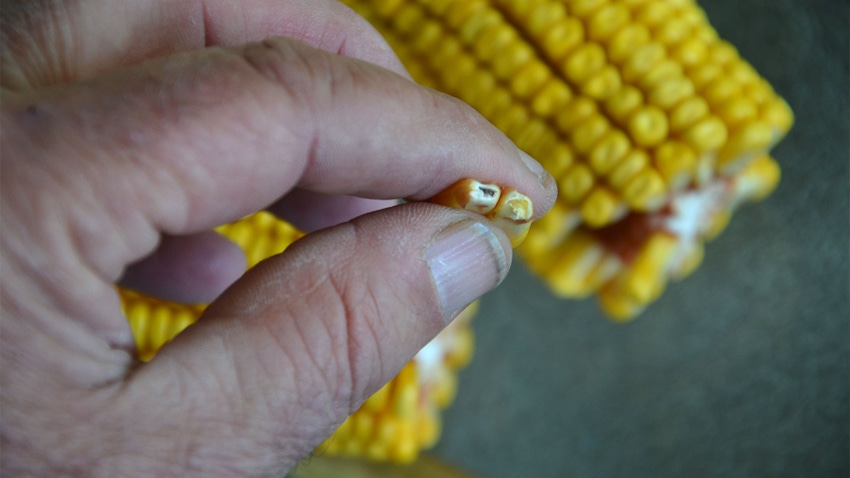
If you’ve still got corn in the field, your biggest concern is harvesting before winter storms arrive. One thing you don’t have to worry about is whether corn will mature before frost. Corn is mature when it reaches black layer. This year, that happened from mid-September into early October.
“We start looking for black layer in early to mid-September, depending upon hybrid maturity,” says Dave Nanda, director of genetics for Seed Genetics Direct, sponsor of Corn Watch ’23. “Knowing that corn has reached black layer is a big deal. The grower knows the crop is safe from frost. Stresses after that point should not hurt yield unless storms increase harvest loss. It’s also key for farmers because the earlier the crop reaches black layer, typically, the sooner it will reach lower moisture levels, enabling earlier harvest.
“It’s a big deal for the plant because once kernels reach black layer, the plant has accomplished its objective. Remember that the one driving goal for a corn plant is to produce as many mature progeny as possible.”
Facts about black layer
Nanda refers to the definition of black layer offered in the 2023 Purdue Corn & Soybean Field Guide: “About 55 to 65 days after R1, kernel dry weight reaches its maximum, and kernels are said to be physiologically mature and safe from frost. Physiological maturity occurs shortly after the kernel milk line disappears and just before the kernel black layer forms at the tip of kernels. The black layer is composed of placental cells that die and collapse, closing the door to the transport of additional photosynthate to the kernel.
“The appearance of the dying placental cells progresses from a thinning, olive-colored layer to a thinner brown layer to a black layer. Severe stress after black layer does not affect harvested grain yield, unless integrity of the stalk is compromised, such as by corn borer larvae or stalk rot.”
It’s logical to believe that the earlier corn is planted, the earlier it will reach black layer, especially compared to corn planted much later in the season. While that’s true to some extent, the difference may not be as big as you expect, Nanda explains.
Especially if you’re comparing corn planted in early to mid-May to corn planted in early to mid-June, the difference may only be a few days. Why? Bob Nielsen, retired Purdue Extension corn specialist, and others discovered that the later corn is planted, the fewer growing degree days it needs to reach maturity.
According to the Purdue guide, corn goes from R3, or the milk stage, to black layer in about 46 days if planted in early May or mid-May. If planted in mid-June, it takes only two days longer.
Authors of the Purdue guide note that delayed planting does not greatly affect the number of calendar days from R3 to black layer, even though late-planted corn matures later when average temperatures are lower.
However, late planting does reduce number of growing degree days required. Corn planted in early May requires 863 GDDs to go from R3 to black layer. Corn planted in mid-June only takes 681 GDDs.
About the Author(s)
You May Also Like




